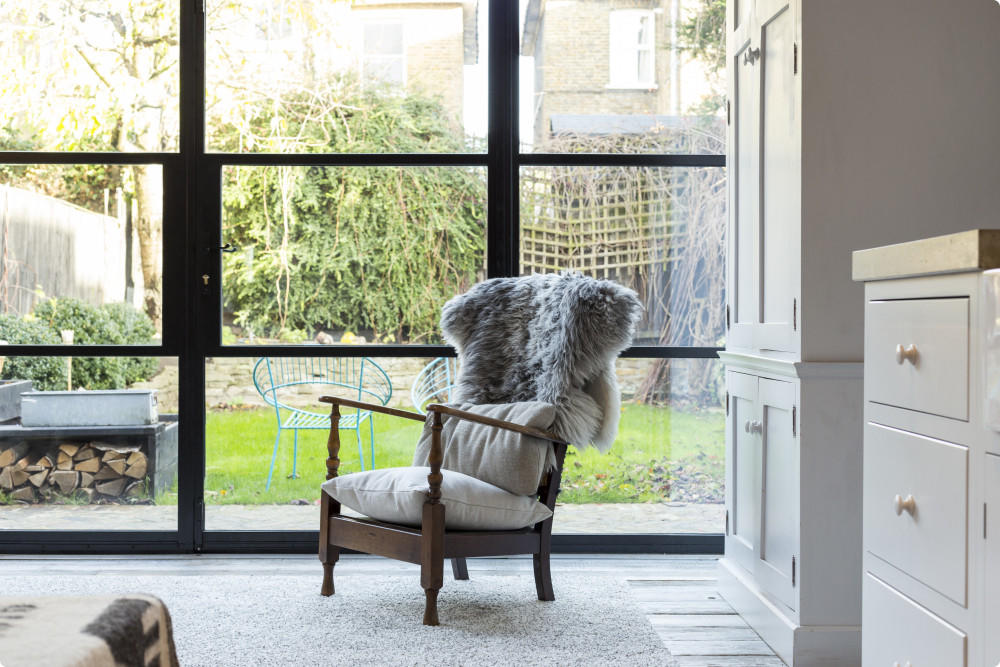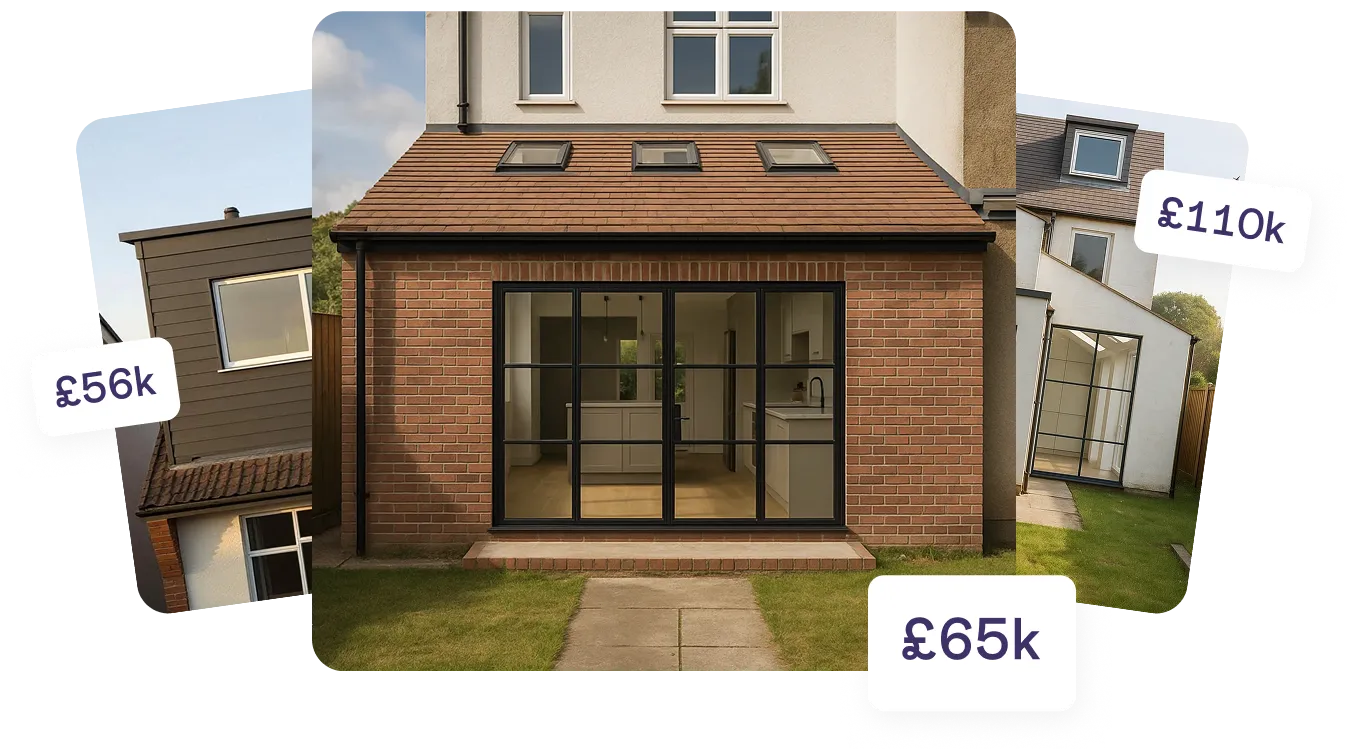As a bare minimum, getting approval will take between 8-10 weeks. However, simply getting a planning officer assigned to you can add up to another 5 weeks. So on the whole, prepare yourself for a lengthy process.
Learn more about planning here.
For the best results, we recommend you have any architect prepare your drawings and manage your application.
Building control
The other legal requirement you’ll need to meet is getting sign off from your local building control. This can either be done by your local authority or by a hired approved inspector.
At a minimum, you’ll need to have your builder work with either an inspector or your local authority (we recommend an approved inspector, find out why here), who will first check your drawings are ok before you get to site and give you a conditional approval to proceed. They’ll then be brought onto site during construction and to sign off the work at various key stages, before giving final approval at the end of the process.
While this will mean your project is deemed legal, without detailed technical drawings of your design, this way of doing things does leave you open to risk. For starters, you’ll be at the mercy of your builder to know the ins and outs of UK building regulations. And if they should make a mistake, many will hold their hands up and say you didn’t give enough instructions and charge you extra to correct the mistakes.
What’s more, the level of inspection is based on the performance and high-level view of the regulations. They’ll be checking to see if what they have been shown looks correct, whether the works are in line with building regulations, there are many other additional details they won’t be checking which they would typically rely on a good set of architectural drawings. This means your missing out on an opportunity to safeguard your home in terms of quality, robustness, and longevity.
But don’t worry, in the next section, we’ll show how upgrading your architectural drawings can help safeguard your project.
You’ll likely need structural engineering
99% of all projects require structural calculations.
This means you’ll need to hire a structural engineer to do the math and help ensure your proposed designs are able to actually stand up in real life. This will be vital to you securing sign-off from building control.
Learn more about structural engineers here.
Party wall matters
If you share a wall, outbuilding, or boundary with a neighbour, you’re legally required to seek their consent before starting construction.
Up to two months before any work commences, you need to serve notice to all legal owners of any building affected by your proposed build unless you agree sooner with a good neighbour Under the Party Wall etc. Act 1996, neighbours have 14 days to respond to your initial notice. If you receive written consent during this time frame, your project can move forward but if not, you’ll need to put together a Party Wall Agreement.
This legal contract requires the input of at least one party wall surveyor but could require more if your neighbour insists on appointing their own. You’ll be responsible for all the costs incurred and, with tricky neighbours, this legal dispute can take 3 or more months.
It’s also worth noting that if you live in a block of flats you will likely need to serve notice to a lot of your neighbours, which can become quite costly.
You should also be on the lookout for ambulance-chasing party wall surveyors. Once your planning has been approved, these rogues will hound your neighbours and you can incur a lot of unnecessary costs. For advice on how to keep your project (and wallet safe), see our advice here.

Give your home some basic protection
Okay, so now that you know about the bare minimum requirements, let’s talk safety. By this, we mean reducing the risk of unexpected issues and delays by finding the right contractors for your project.
Building regulation drawings
There’s more than one way to go about getting building control approval. We’ve discussed the most basic approach, now let’s talk about the one that gives you the best results.
The other way to get approval is to have an architect and structural engineer put together a set of building regulation drawings. These technical plans will lay out, at a high level of detail, everything your contractor will need to do in order to meet UK regulations and make your house a safe and healthy place to occupy.
These drawings can then be submitted to either your local building control or an approved inspector, who will then give you permission to build. Then during and at the end of the project, they’ll inspect the work to make sure the drawings have been upheld.
Benefits of choosing this route…
- By having detailed drawings, your contractor will be able to provide a more accurate quote, as well as save you time and money. They’ll know what to build so can plan around this, rather than using the time you’re paying for to work out the details.
- If a mistake is made, the contractor will be the one liable, as long as you include in the contract drawings must be followed.
- Any potential issues you learn about before the start of construction, meaning they can be fixed at minimum expense.
- You’re not just relying on the work of one professional.
Learn more about building regulation drawings here.
CCTV survey
To ensure your project doesn’t run into any sewer or plumbing problems, you can commission a CCTV survey, which stands for Closed Circuit Television Survey and refers to the camera the surveyor uses to map out these elements.
Your surveyor will visit your property to create a detailed map of your drainage system below ground and layout, allowing your architect to understand the impact a new development (such as a rear extension) will have. Mapping this out beforehand can highlight whether or not a build over agreement is required, not to mention, prevent costly delays or errors when on site.
Learn more about pipes, build over agreements and surveys here.
Party wall surveyor
If affected by a party wall, you can give yourself the best chance of securing consent first time by getting a party wall surveyor involved from the start.
By preparing your own party wall notice, you open yourself up to mistakes. Should any error occur in the document prepared, the consent becomes void, meaning your neighbour could take you to court down the line.
Having a surveyor by your side means your notice is airtight, from a legal perspective. What’s more, a surveyor tends to be better at convincing difficult neighbours to come around to your project or, at the very least, can take those difficult conversations off your plate.
JCT Contract
JCT contracts are what you use to get legal protection for your build. They can vary hugely in what they cover, starting from as little as just listing which parties are involved, all the way to covering: insurance, finance, accommodation, timings - plus more.
As a bare minimum, we recommend you cover these key areas:
- Your payment plan
- Timings
- And insurance
Make sure you’re not paying upfront for the work. After an initial deposit, you want to be releasing funds at key milestones and preferably after the work has been checked out - either by yourself or a project manager.
Secondly, try to establish an achievable timeline. What stages should be completed when and what happens in the event of delays? You’ll also want to put down in writing that you expect construction to follow the details mapped out in the building regulations package.
Finally, make sure you’ve got some basic insurance in place, such as public liability.
For the best results, have a professional by your side who has JCT contract experience. At Resi, our Connect team help you assess your contracts while our Finance team can even step in to ensure all the correct insurance and best policies are in place.

The most robust way to protect your home
So, you’ve ticked off the basic legal requirements and you’ve got a little protection in place, but now you want to make your project airtight, eliminating as many risks as possible and ensure your build is as accurate as possible to the original designs. If this sounds right for you, here’s what you need to do...
Construction detailing
While a building regulations package covers the basics of your project - walls, roof, and floors - it does leave off those added design extras.
If your project includes bespoke elements or architectural flourishes, it’s worth considering getting the technicalities mapped out for your contractors.
Unlike a full construction issue package, we allow our customers to selectively choose which parts of your project needs special attention. This is a cost-effective way of ensuring the highest quality build. Going down this route can also come in handy, should the building control inspector or party wall surveyor requests more information on certain elements.
Room data sheets
Building regulation drawings takes care of all those vital, technical details, such as structure and insulation - but what about those finishing touches?
We’re talking about the materials used, which fittings are going where and whether any other rooms in your house might be affected. This is where a room data sheet comes into play.
For example, if you’re undertaking a kitchen extension, these documents will layout what tiles you’ll be using and whose responsibility it is to source them. It’ll list your appliances and where they’ll go. Plus, should your new kitchen impact an adjoining living room, the renovations needed there will also be detailed to your contractor.
This last point is very important as the refurbishment of other parts of your home is unlikely to be covered in any great detail in any other part of the process.
Ultimately, this rounds out the understanding your contractor will have of your finished space. The more details they have, the more in line your build will be to your vision.
Electric and lighting plan
Your building regulation drawings will include detailed specification on your future smoke detection, internal lighting, fixed external lighting, heating and all electrical works. When it comes to construction, your builder and electrician should then give you the chance to walk around the site to mark on the walls and ceilings all of your sockets, switches and lights.
However, this way of doing things means the placement is open to change and contractors often move things around when not set out in plans.
An electric and lighting plan provides a layout based on clients instructions or an architect's experience, which will then be issued to you as a draft before being finalised and added to your tender package - ensuring your lighting goes exactly in the right place the first time.
Don’t worry, most people can change the location of their light switches up to the last second.
Schedule of works / quantified schedule
A schedule of works or quantified schedule ensures your tender package includes all of the work that’s required. This allows you to accurately compare quotations across all aspects of the build and understand the contractor has included everything in their estimations. It gives you control of the pricing, allow you to query across tenders and also understand the work and timeframes involved.
If you want to make sure you’re getting an honest view of the construction stage, this is a must for your project.
Insurance
Want to give your home the best protection possible? Make sure you’re taking out…
Home insurance
Did you know, during construction, you won’t be adequately covered by your regular home insurance, especially if you are not going to be in the property during the build? To give yourself proper protection, look into what renovation policies are on the market.
Structural warranty
This warranty will protect your project for 10 years from ‘latent defects’ to the structure of the building. This means, should something have gone wrong during construction which isn’t spotted right away, your investment is safe from costly repairs.
Life insurance
If you’re taking out finance on your project, you’ll also want to either update your life insurance plan or take one out. Paying off home improvement loans can take years and you don’t want your surviving family facing the debt alone, should the worst happen.
Get your home fully insured with help from our Finance team.
By including all these elements, plus the ones mentioned in the other sections, you’ll better protect yourself against the worst-case scenarios, and ultimately ensure you get the best build possible. While it may take a little extra time to undergo these steps, plus some upfront costs, the returns you’ll get in the long run and the expenses you avoid if things go sour, make it all worth it.
To learn more about preparing for construction, book a call in with our experts. We can help advise the best route to a happy space, all free of charge.







